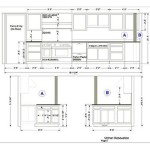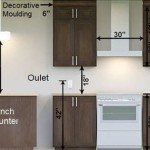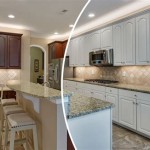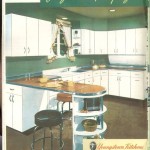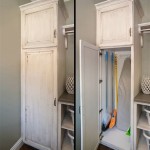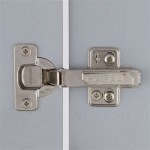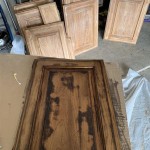Kitchen Cabinet Knobs and Pulls Sets: A Comprehensive Guide
Kitchen cabinet hardware, including knobs and pulls, plays a crucial role in both the functionality and aesthetics of a kitchen. These seemingly small components can significantly impact the overall style and usability of cabinetry. Choosing the right kitchen cabinet knobs and pulls, especially when considered as a complete set, requires careful evaluation of various factors, including material, style, size, finish, and mounting considerations.
A cohesive hardware set can unify the design elements within a kitchen, creating a polished and intentional look. Opting for a curated set simplifies the design process, ensuring that all knobs and pulls complement each other in terms of style and finish. This eliminates the need to individually source each piece of hardware, saving time and effort while guaranteeing a coordinated aesthetic.
This guide provides a comprehensive overview of kitchen cabinet knobs and pulls sets, exploring key considerations for selecting the appropriate hardware to enhance both the functionality and visual appeal of your kitchen.
Understanding the Importance of Knobs and Pulls in Kitchen Design
Kitchen cabinet hardware is more than just a functional component; it is an integral part of the overall kitchen design. Knobs and pulls contribute significantly to the perceived aesthetic. The style, finish, and even the size of the hardware can complement or clash with the existing cabinetry, countertops, backsplash, and appliances. Therefore, careful consideration should be given to matching the hardware to the overall design theme of the kitchen.
Functionality is another critical aspect to consider. Knobs and pulls should be comfortable to grip and use, allowing for effortless opening and closing of cabinet doors and drawers. The size of the hardware should be appropriate for the size and weight of the cabinet or drawer. Smaller knobs may suffice for lightweight doors, while larger pulls are often necessary for heavier drawers, ensuring a secure and ergonomic grip.
Ergonomics also play a significant role. Choosing hardware that is easy to grasp, especially for individuals with limited hand strength or mobility, can improve accessibility and ease of use. The placement of the hardware is equally important; strategically positioning knobs and pulls at the optimal height and location on doors and drawers can minimize strain and maximize comfort.
Factors to Consider When Selecting Kitchen Cabinet Knobs and Pulls Sets
Selecting the ideal kitchen cabinet knobs and pulls set requires a deliberate approach, taking into account several key factors that will influence both the aesthetics and functionality of the kitchen. The following are essential considerations:
Material and Durability
The material composition of kitchen cabinet hardware directly impacts its durability, longevity, and aesthetic appeal. Common materials used in the manufacturing of knobs and pulls include:
- Brass: A durable and classic choice, brass offers a warm, rich tone and is resistant to corrosion. It can be polished to a high sheen or left to develop a natural patina over time.
- Stainless Steel: Known for its strength and resistance to rust, stainless steel is a popular option for modern kitchens. It offers a sleek, contemporary look and is relatively easy to maintain.
- Zinc Alloy: A cost-effective alternative to brass or stainless steel, zinc alloy is durable and can be plated with various finishes. It provides a versatile option for different design styles.
- Ceramic: Decorative and often intricate, ceramic knobs and pulls add a touch of charm to traditional kitchens. They are available in a wide range of colors and patterns.
- Glass: Glass hardware can add a touch of elegance and sophistication to any kitchen. It is available in various colors, shapes, and textures. However, glass can be more fragile than other materials.
- Wood: Wood knobs and pulls offer a warm, natural look that complements rustic or farmhouse-style kitchens. Wood requires regular maintenance and can be susceptible to moisture damage.
When selecting a material, consider the overall style of the kitchen, the level of durability required, and the ease of maintenance. High-traffic areas may benefit from more durable materials like stainless steel or brass, while less frequently used cabinets can accommodate more decorative options like ceramic or glass.
Style and Finish
The style and finish of kitchen cabinet hardware should complement the overall design aesthetic of the kitchen. Different styles and finishes evoke distinct moods and can dramatically alter the visual impact of the cabinetry.
- Styles:
- Traditional: Features ornate details, curves, and classic shapes.
- Modern: Emphasizes clean lines, minimalism, and geometric forms.
- Contemporary: A blend of modern and traditional elements, offering a balanced and versatile aesthetic.
- Rustic: Incorporates natural materials, textured surfaces, and a weathered look.
- Farmhouse: Combines rustic charm with practical functionality, often featuring vintage-inspired designs.
- Finishes:
- Polished Chrome: A shiny, reflective finish that complements modern and contemporary kitchens.
- Brushed Nickel: A subtle, muted finish that offers a warm, understated look.
- Oil-Rubbed Bronze: A dark, aged finish that adds a touch of rustic charm.
- Matte Black: A bold, contemporary finish that creates a striking contrast against light-colored cabinetry.
- Antique Brass: A warm, aged finish that evokes a sense of history and tradition.
- Gold: Adding a touch of luxury and elegance.
Consider the color and material of the cabinetry, countertops, and backsplash when selecting a finish. For example, brushed nickel or stainless steel finishes often pair well with stainless steel appliances, while oil-rubbed bronze or antique brass finishes complement wood cabinetry and granite countertops.
Size and Projection
The size and projection of kitchen cabinet hardware are crucial considerations for both aesthetics and ergonomics. The size of the knob or pull should be proportionate to the size of the cabinet door or drawer. Small knobs may look diminutive on large doors, while oversized pulls can overwhelm smaller drawers.
Projection refers to how far the hardware extends from the surface of the cabinet. Adequate projection is essential for comfortable gripping and allows sufficient space for fingers to grasp the hardware easily. Consider the depth of the cabinet door or drawer when determining the appropriate projection. If the hardware protrudes too far, it may become a safety hazard or obstruct movement within the kitchen.
Generally, pulls should be at least one-third the width of the drawer they are adorning. Standard sizes for pulls typically range from 3 inches to 8 inches center-to-center. Knobs are more forgiving in terms of size, but choosing a knob that feels substantial in hand is still important.
Mounting Considerations and Hole Spacing
Before purchasing a kitchen cabinet knobs and pulls set, it is essential to assess the existing mounting holes on the cabinetry. If replacing existing hardware, the new hardware must match the existing hole spacing. Standard hole spacings for pulls typically range from 3 inches to 5 inches center-to-center. If the existing hole spacing does not match the desired hardware, it may be necessary to drill new holes, which can be a more involved process.
When installing new cabinetry, the placement of the hardware is typically determined during the installation process. Consider the ergonomics of the hardware placement, ensuring that knobs and pulls are positioned at a comfortable height and location for easy access. For upper cabinets, knobs and pulls are typically placed on the bottom corner of the door, while for lower cabinets, they are typically placed on the upper corner of the door.
Drawer pulls are often centered on the drawer front, but the specific placement may vary depending on the size and style of the drawer. Larger drawers may benefit from two pulls for added stability and ease of use.
Choosing the Right Combination of Knobs and Pulls
Deciding whether to use knobs, pulls, or a combination of both is a matter of personal preference and design intent. Many homeowners opt for a combination of knobs and pulls, using knobs on cabinet doors and pulls on drawers. This approach can create visual interest and differentiate between the different functions of the cabinetry.
Another approach is to use all knobs or all pulls throughout the kitchen. This can create a more streamlined and minimalist look. When using all knobs, it is important to choose knobs that are large enough to provide a comfortable grip, especially for heavier drawers. When using all pulls, consider varying the length of the pulls based on the size of the drawer.
Ultimately, the best approach is to experiment with different combinations and arrangements to find the style that resonates most with your personal taste and complements the overall design of the kitchen. Visualizing the hardware in place can be helpful in making the final decision. Consider using templates or mock-ups to test different hardware options before committing to a purchase.

60 Of Our Favorite Budget Friendly Cabinet Hardware Picks

Cabinet Hardware The Home Depot

Learn How To Place Kitchen Cabinet Knobs And Pulls Cliqstudios

How To Choose Cabinet Hardware Schoolhouse

Best Kitchen Cabinet Hardware 2024

Cabinet Hardware Placement Guide

Set Of 6 Mini Cast Iron Skillet Drawer Pulls Decorative Kitchen Cabinet Knobs 2 25 Kroger

Top Knobs Home

Zeckos Cast Iron Wine Glass Cabinet Knob Drawer Pulls Set Of 6 Com

Learn How To Place Kitchen Cabinet Knobs And Pulls Cliqstudios
Related Posts

